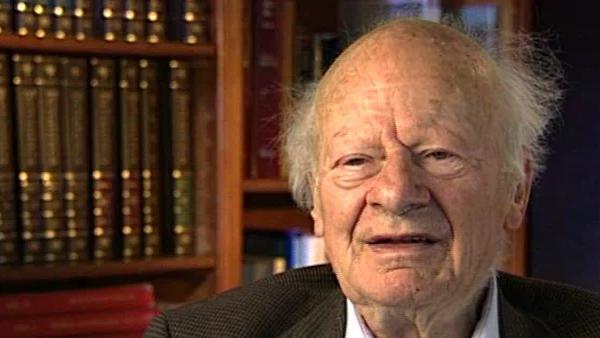NEXT STORY

Stanislav Mikheyev and Alexi Smirnov's theory
RELATED STORIES

NEXT STORY

Stanislav Mikheyev and Alexi Smirnov's theory
RELATED STORIES


|
Views | Duration | |
|---|---|---|---|
| 141. The formation of binary neutron stars | 232 | 01:52 | |
| 142. The statistics of masses of neutron stars | 226 | 01:57 | |
| 143. An upper limit to the mass of a neutron star | 273 | 01:47 | |
| 144. Condensation of K-minus mesons | 213 | 02:59 | |
| 145. How to observe a neutrino | 239 | 02:35 | |
| 146. Trying to observe neutrinos from the sun | 219 | 04:07 | |
| 147. Ray Davis's method of proving neutrinos come from the sun | 206 | 01:55 | |
| 148. How the Kamiokande experiment worked | 213 | 02:26 | |
| 149. Comparing the Kamiokande and Homestake experiments | 285 | 03:01 | |
| 150. Stanislav Mikheyev and Alexi Smirnov's theory | 237 | 02:54 |


Both in the Kamiokande experiment and in the Homestake experiment by Davis, the number of neutrinos observed was too small. In the Kamiokande experiment in particular you can only observe the neutrinos which come boron-8, only those have enough energy so the recoil electrons can be seen. But the Cal Tech experiments were good enough so one could tell with some accuracy how much boron-8 will be formed in the interior of the sun, and therefore you could tell how many neutrinos there should be, and Kamiokande observed only half as many. Homestake, Davis, observed only about a quarter of the number of expected neutrinos. Well, that was a great puzzle. We now knew that neutrinos did come from the sun, but why there... why then were there not enough? Well, [the] first thing to blame was the nuclear physics at Cal Tech and that's why the experiments were repeated and it was shown that they were all right. Second thing to blame was... were the experiments - now the Homestake experiments you could have some doubt about, but there was absolutely no doubt about the Japanese Kamiokande experiments. So it was quite clear that we did not see all the neutrinos that ought to come from the sun. Bahcall tried very hard to change the model of the sun, that is to give the sun less central temperature, that would diminish the formation of boron-8. No luck. Other people tried too, and Bahcall in the end proved that the standard model which had been developed and which he had contributed most to, was correct, and that really the temperature at the center of the sun is 15 million degrees and not 13. So boron-8 should be produced.
The late German-American physicist Hans Bethe once described himself as the H-bomb's midwife. He left Nazi Germany in 1933, after which he helped develop the first atomic bomb, won the Nobel Prize in Physics in 1967 for his contribution to the theory of nuclear reactions, advocated tighter controls over nuclear weapons and campaigned vigorously for the peaceful use of nuclear energy.
Title: Comparing the Kamiokande and Homestake experiments
Listeners: Sam Schweber
Silvan Sam Schweber is the Koret Professor of the History of Ideas and Professor of Physics at Brandeis University, and a Faculty Associate in the Department of the History of Science at Harvard University. He is the author of a history of the development of quantum electro mechanics, "QED and the men who made it", and has recently completed a biography of Hans Bethe and the history of nuclear weapons development, "In the Shadow of the Bomb: Oppenheimer, Bethe, and the Moral Responsibility of the Scientist" (Princeton University Press, 2000).
Tags: John Bahcall, Raymond Davis
Duration: 3 minutes, 2 seconds
Date story recorded: December 1996
Date story went live: 24 January 2008